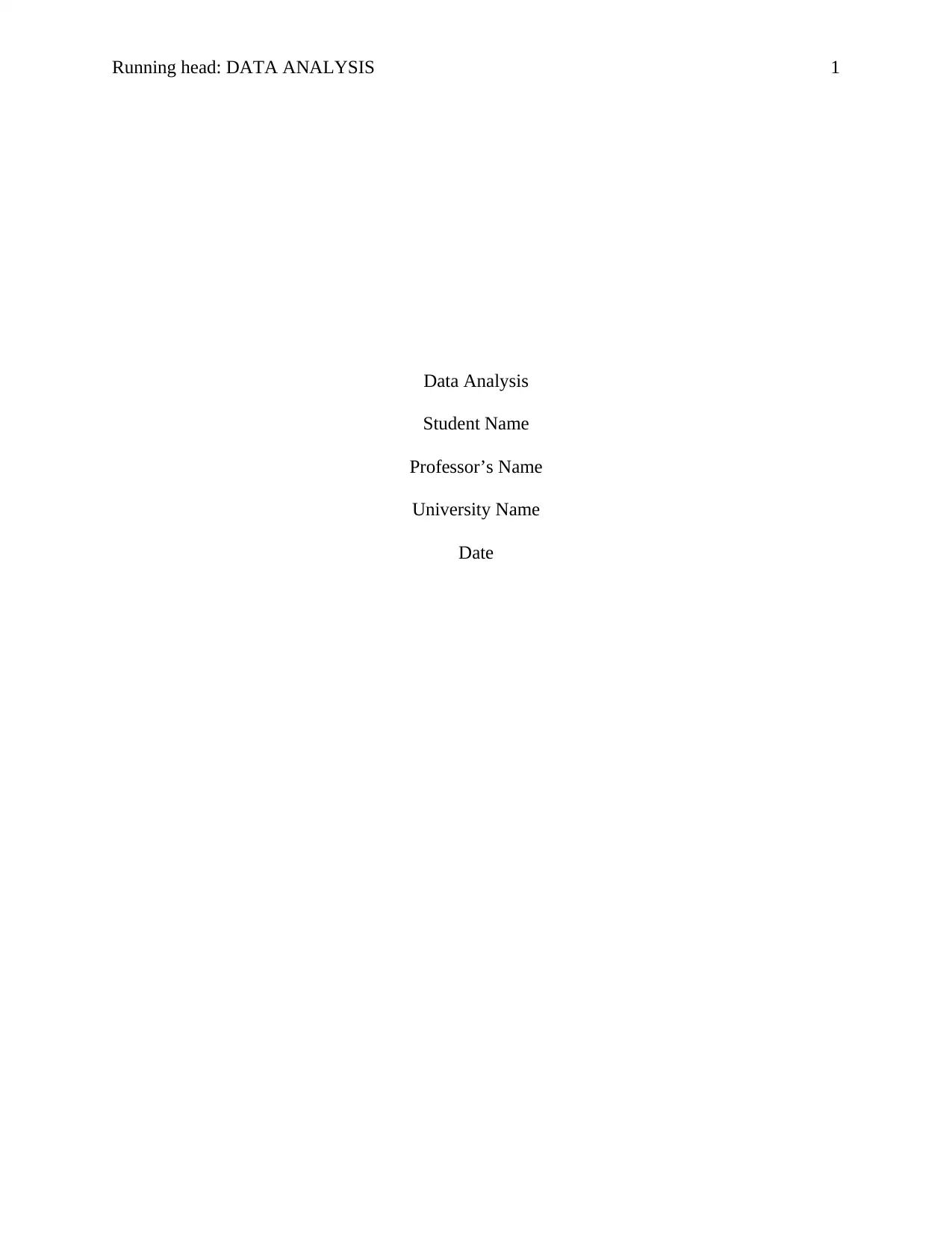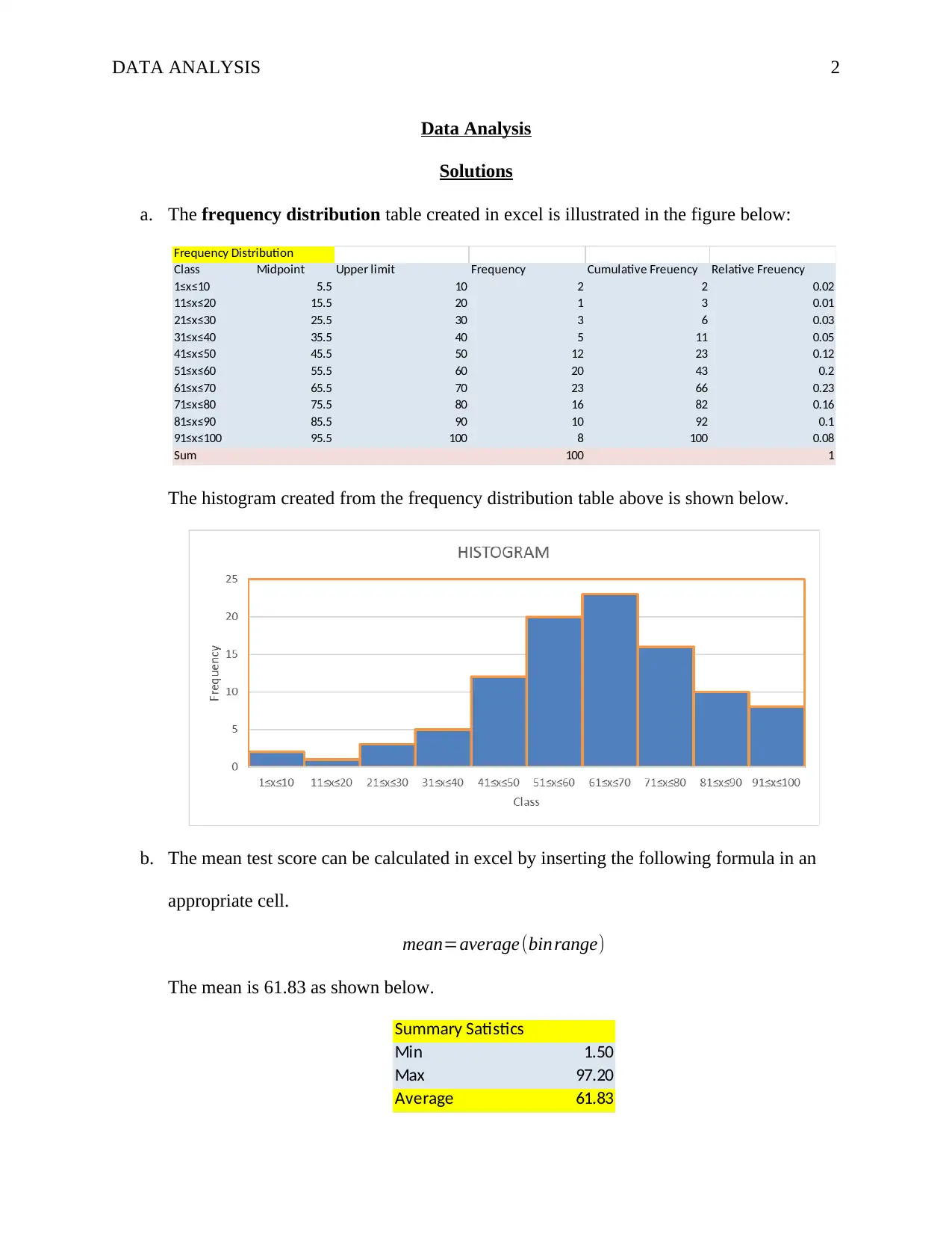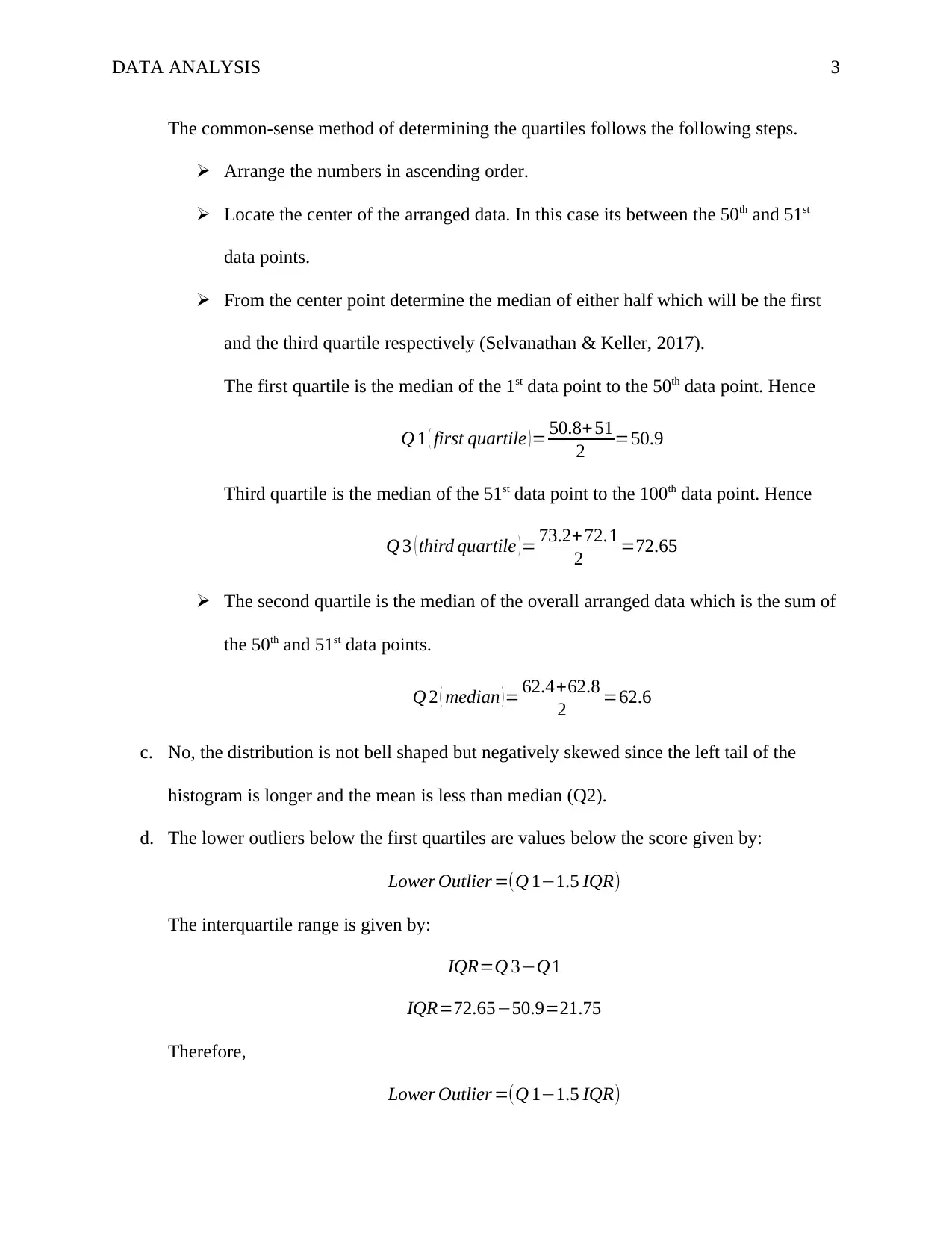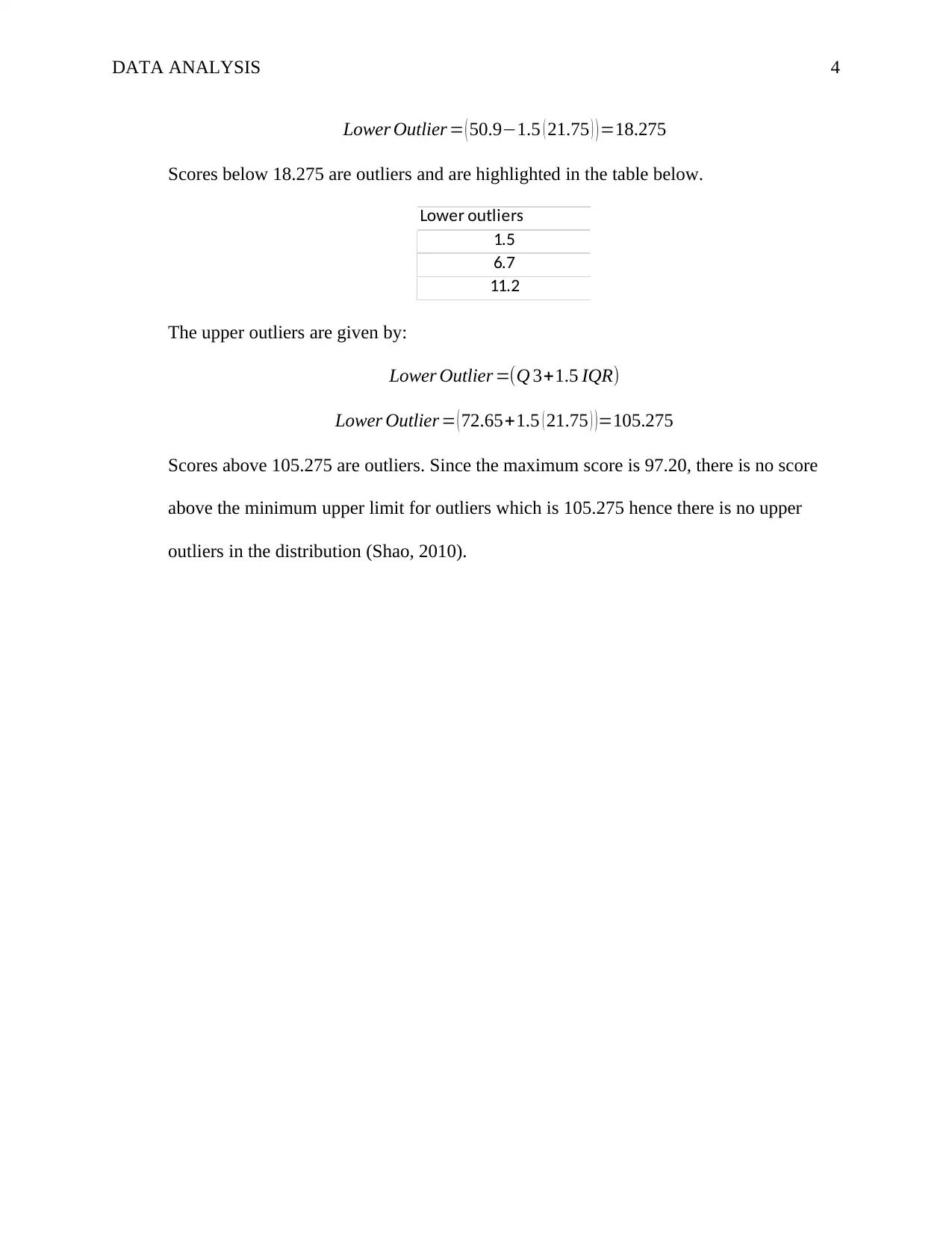Statistical Analysis of Aptitude Test Scores - Semester 1, 2024
VerifiedAdded on 2022/08/27
|5
|369
|20
Homework Assignment
AI Summary
This assignment provides a comprehensive analysis of aptitude test scores. The solution includes constructing a frequency distribution table and a histogram with a class width of 10 using Excel. The mean test score is calculated, and the quartiles (Q1, Q2, and Q3) are determined using the common-sense rule. The assignment then assesses whether the distribution of test scores is bell-shaped based on the calculated statistics. Finally, the solution identifies outliers in the dataset using the 1.5 IQR rule, demonstrating the application of statistical concepts to real-world data analysis. The solution also includes proper referencing.
1 out of 5












![[object Object]](/_next/static/media/star-bottom.7253800d.svg)